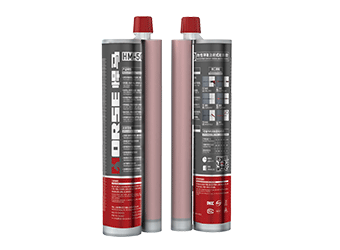Soluciones
La gama de negocios de construcción de caballos se extiende a todo el mundo y sirve a miles de clientes con productos, orientación técnica especializada en construcción, y somos testigos del reinicio de la marca china con ellos.
The bonded carbon fiber reinforcement method refers to the bonding of carbon fiber sheets on the surface of concrete members with adhesive, giving full play to the tensile strength of carbon fiber, replacing steel bar. It is mainly used for strengthening the flexural capacity and shear capacity of concrete members.
Basic principles of seismic strengthening in China
1) Considering the historical conditions of the existing buildings, the seismic fortification requirements are slightly lower than those of the new construction projects, that is, the safety degree of seismic reinforcement can be reduced by 15%-30%, but not lower than 7 degrees.
2) Seismic appraisal must be made before aseismic reinforcement, and buildings which have no value for aseismic reinforcement should be demolished according to their necessity and rationality of technical and economic.
3) The emphasis of seismic strengthening is urban lifeline engineering and engineering projects that are likely to cause secondary disasters.
4) When strengthening, we should strengthen the integrity of the structure, improve the deformation capacity and strengthen the weak links and dangerous parts.
Seismic strengthening objects
1) Buildings and structures that have not taken seismic fortification measures shall be appraised for their seismic performance in accordance with the relevant provisions of the State, and necessary seismic strengthening measures shall be taken.
2) buildings and structures built in areas with improved seismic fortification standards.
3) Buildings and structures damaged in earthquakes are deemed necessary to be strengthened against earthquakes to restore their serviceability.
Seismic strengthening technology for concrete structures
1) Enlarged section method, also known as enclosed concrete reinforcement method, that is, by pouring new reinforced concrete outside the original concrete members, increase the section area and reinforcement of structural members, to achieve the purpose of improving the bearing capacity and stiffness of the structure. The enlarged section method is applicable to concrete columns, plates, beams and other structural members.
2) Steel-encased reinforcement method is a reinforcement method in which angle steel is wrapped around the reinforcement member to improve the bearing capacity of the member. It can be divided into two forms: dry-encased steel and wet-encased steel. Dry wrapping method refers to the angle steel directly wrapped around the strengthened member, or although filled with cement mortar, but can not guarantee the effective transmission of shear at the joint surface. Wet wrapping method means that there is a certain gap between angle steel and reinforced members, and the gap is filled with latex cement mortar or injected structural adhesive. This method can significantly improve the bearing capacity, ductility and stiffness of members without changing the section size. The wrapped steel reinforcement method is applicable to concrete columns and beams.
3) change the force system reinforcement method. By adding structural lateral force components, such as concrete anti-seismic wall, steel braces, etc., the stress mode of the structure under earthquake is changed. Most of the earthquake action will be transferred to the new seismic wall and steel support, and the original structural members will bear a small part of the earthquake action, so that the original bearing capacity of the members to meet the seismic requirements, thus achieving the purpose of strengthening the original structure.
4) Bonding steel reinforcement method is a kind of reinforcement method, which uses binder (structural adhesive) to paste thin steel plate on the surface of concrete components, so that steel plate and concrete work together. It is mainly used for strengthening the flexural capacity and shear capacity of concrete members. In addition, this method is also used in the opening of concrete shear walls.
5) bonding carbon fiber fabric reinforcement method is similar to the bonding steel plate reinforcement method. The bonded carbon fiber reinforcement method refers to the bonding of carbon fiber sheets on the surface of concrete members with adhesive, giving full play to the tensile strength of carbon fiber, replacing steel bar. It is mainly used for strengthening the flexural capacity and shear capacity of concrete members. This method can also be used for ductile strengthening of structural columns.
Puede encontrar cualquier cosa que necesite, confíe en probar estos productos y encontrará la gran diferencia después de eso.

Tejido de fibra de carbono unidireccional de alta resistencia para refuerzo de compuesto de polímero reforzado con fibra (FRP).

Resina de anclaje epoxi, paquete de cartucho doble. Se inyecta en los orificios con la pistola dispensadora para plantar barras.

Adhesivo de refuerzo estructural para revestimientos de acero.